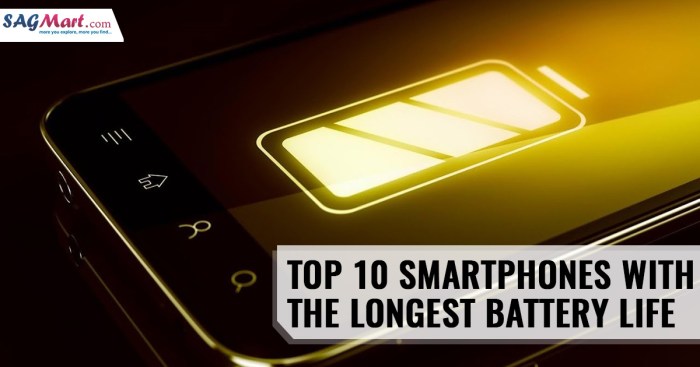Comparing smartphones with the longest battery life available is crucial for discerning consumers. This exploration delves into the multifaceted aspects influencing battery longevity, from raw capacity and technological advancements to software optimization and user behavior. We’ll examine leading contenders, dissect diverse battery technologies, and analyze the impact of factors like screen technology, processor efficiency, and charging speeds. Ultimately, this analysis aims to equip readers with the knowledge to make informed decisions when choosing a smartphone that meets their power needs.
We’ll investigate various aspects influencing battery performance, including battery technology types, software optimization techniques employed by different manufacturers, and the impact of screen technology and processor efficiency. Real-world usage scenarios will be considered, offering practical insights into battery life under different conditions. Finally, we’ll explore the relationship between price and battery life, helping you determine if a premium price truly reflects superior battery performance.
Defining “Longest Battery Life”
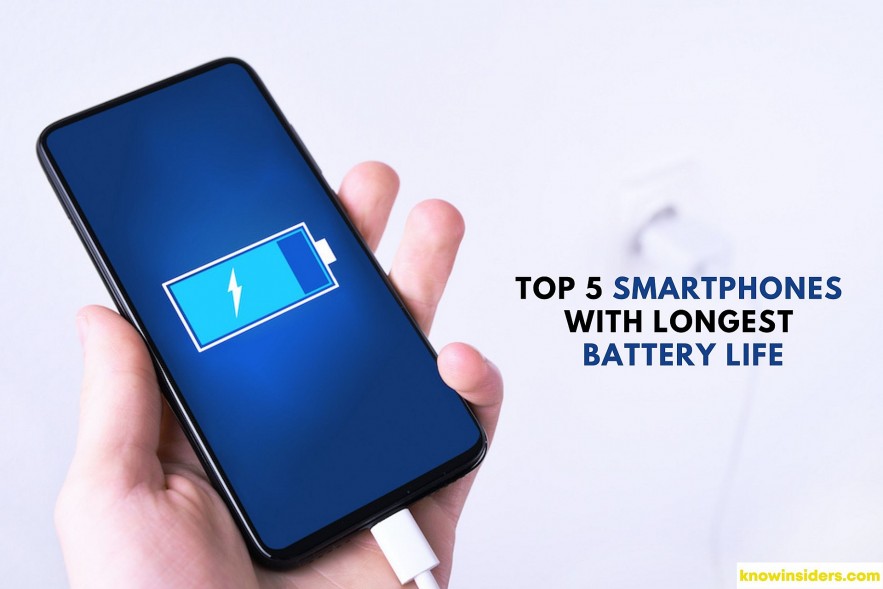
Defining “longest battery life” for smartphones isn’t straightforward. It’s not simply a matter of comparing milliampere-hour (mAh) ratings, as numerous factors influence real-world performance. A higher mAh rating suggests a larger battery capacity, but this alone doesn’t guarantee superior battery life.
The term “longest battery life” requires a standardized definition that accounts for diverse usage patterns. A phone excelling in one scenario might underperform in another. A fair comparison necessitates considering typical use cases, such as browsing, social media, gaming, video streaming, and phone calls. Each activity consumes power differently, affecting overall battery endurance.
Factors Influencing Battery Life Beyond Capacity
Battery capacity (mAh) is crucial, but other hardware and software components significantly impact longevity. Screen technology plays a vital role; AMOLED displays, while visually stunning, generally consume more power than LCD screens, especially when displaying bright or dynamic content. Processor efficiency is another key factor; a more power-efficient processor will consume less energy, leading to extended battery life. Software optimization also matters; well-optimized software minimizes background processes and reduces power consumption. Finally, network connectivity influences battery drain; 5G networks, while offering faster speeds, often consume more power than 4G LTE. A phone with a large battery might perform poorly if its processor is inefficient or the screen is highly power-hungry.
Methodology for Comparing Smartphone Battery Life
A robust methodology for comparing battery life needs standardized testing conditions. First, a representative set of usage scenarios must be defined, mirroring real-world activities. These scenarios should include specific tasks like web browsing (e.g., 30 minutes of continuous browsing), video streaming (e.g., 1 hour of streaming at a specific resolution), and gaming (e.g., 1 hour of a graphically demanding game). Each phone should undergo the same tests under identical conditions (brightness level, network type, etc.). The results should be presented as a combined score reflecting performance across all test scenarios, rather than relying solely on a single metric. Furthermore, multiple testing cycles for each phone would help minimize variations and enhance the reliability of the comparison. This ensures a fair and accurate representation of the phones’ battery performance under various real-world usage patterns. For example, a test might involve 30 minutes of web browsing at 50% screen brightness, followed by an hour of video streaming at the same brightness, and concluding with 30 minutes of gaming. The total time until battery depletion would be recorded for each phone, with the results averaged across multiple testing cycles.
Comparing Battery Technologies: Comparing Smartphones With The Longest Battery Life Available
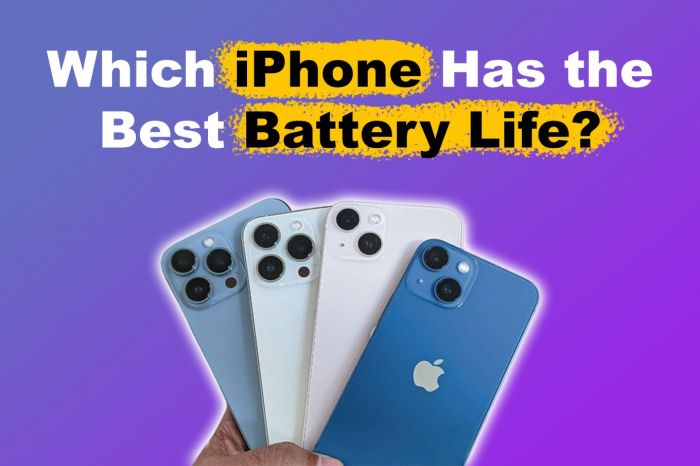
The quest for longer smartphone battery life has driven innovation in battery technology. Understanding the different types of batteries and their characteristics is crucial for consumers seeking devices with extended usage time. This section compares and contrasts the prevalent battery technologies used in smartphones, highlighting their advantages and disadvantages in terms of battery life, charging speed, and safety.
Lithium-ion Polymer Batteries
Lithium-ion polymer (LiPo) batteries are currently the dominant technology in smartphones. They offer a good balance between energy density, safety, and cost-effectiveness. LiPo batteries use a polymer electrolyte instead of a liquid electrolyte, making them more flexible and safer than their lithium-ion counterparts. This flexibility allows for thinner and lighter battery designs, contributing to the sleek form factors of modern smartphones.
Advantages and Disadvantages of Lithium-ion Polymer Batteries
LiPo batteries offer several advantages: their high energy density allows for longer battery life compared to older technologies; they are relatively lightweight and flexible, enabling thinner phone designs; and their improved safety features minimize the risk of overheating and explosions. However, they also have some disadvantages: LiPo batteries have a limited lifespan and degrade over time, reducing their capacity; they are susceptible to damage from overcharging or extreme temperatures; and their charging speed, while improving, is not as fast as some emerging technologies.
Solid-State Batteries
Solid-state batteries represent a promising future technology for smartphones. Unlike LiPo batteries, which use a liquid or gel electrolyte, solid-state batteries employ a solid electrolyte. This fundamental difference offers several potential advantages, including higher energy density, faster charging speeds, and enhanced safety. The solid electrolyte is less prone to leakage and degradation, leading to a longer lifespan and improved overall performance.
Advantages and Disadvantages of Solid-State Batteries
Solid-state batteries boast several key advantages: their significantly higher energy density translates to much longer battery life; they offer the potential for extremely fast charging; and they are inherently safer due to the non-flammable solid electrolyte. However, the technology is currently less mature and faces challenges: the manufacturing process is complex and expensive, leading to higher production costs; their energy density, while promising, hasn’t yet fully surpassed LiPo in real-world applications; and the current charging speeds, while improved, aren’t universally significantly faster than the fastest LiPo charging technologies available today.
Comparison Table of Battery Technologies
| Feature | Lithium-ion Polymer | Solid-State |
|---|---|---|
| Energy Density | High (relatively) | Very High (potential) |
| Charging Speed | Moderate to Fast (improving) | Very Fast (potential) |
| Safety | Good (relatively) | Excellent (potential) |
| Lifespan | Limited (degrades over time) | Long (potential) |
| Cost | Relatively Low | High (currently) |
Impact of Software Optimization
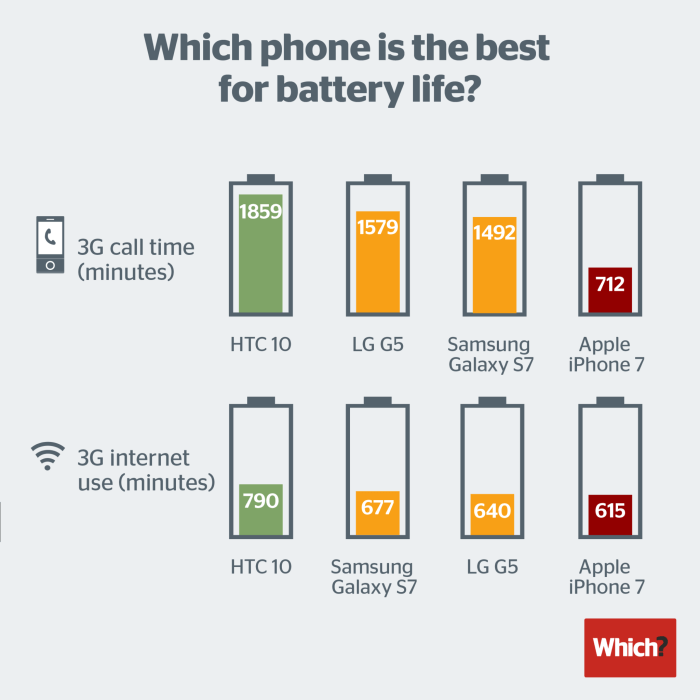
Software optimization plays a crucial role in maximizing smartphone battery life. While hardware components like the battery itself and the processor are important, the software running on the device significantly influences how efficiently these components are used, ultimately impacting the overall battery performance. Efficient software management reduces unnecessary power drain, extending the time between charges.
Software optimization techniques employed by manufacturers and developers focus on minimizing background processes, improving power management of individual apps, and intelligently allocating resources based on usage patterns. This results in longer battery life, a key selling point for many smartphones.
Software Features Affecting Battery Consumption
Several software features and settings can significantly impact battery consumption. These include high screen brightness, constantly active location services, unnecessary background app activity, and high refresh rates. For example, a screen set to maximum brightness consumes considerably more power than a screen at a lower setting. Similarly, constantly running location services in the background, even when not actively using a location-based app, will drain the battery faster. Many applications also continue to operate in the background, consuming power even when not actively used. Finally, higher refresh rates, while visually appealing, increase power consumption. Managing these settings effectively is crucial for battery life optimization.
Manufacturer-Specific Optimization Techniques
Different smartphone manufacturers employ various software optimization techniques. For instance, some manufacturers utilize AI-powered battery management systems that learn user behavior and prioritize power consumption based on usage patterns. These systems can identify and restrict power-hungry apps during periods of inactivity, leading to improved battery performance. Other manufacturers may focus on optimizing the Android operating system itself, creating custom versions that are more efficient in terms of power consumption. Some manufacturers may also include features that automatically reduce the screen’s refresh rate or brightness based on ambient light conditions or user activity, thus conserving energy. These techniques vary greatly, reflecting different approaches to software development and power management priorities.
Real-World Usage Scenarios
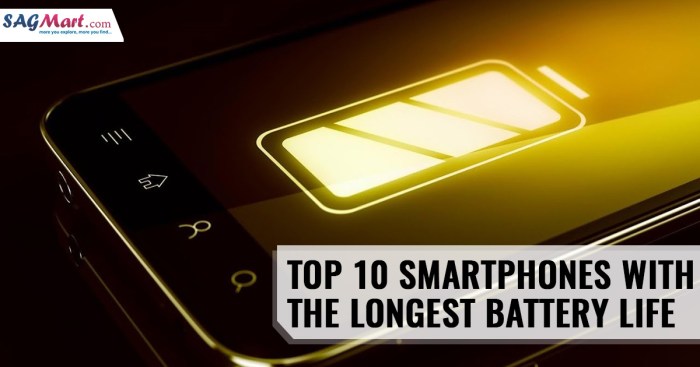
Understanding how battery life performs under various usage conditions is crucial when comparing smartphones. The longevity advertised often differs from real-world experience, which is heavily influenced by individual usage patterns. This section examines typical daily scenarios and estimates battery life for leading long-battery-life contenders. These estimates are based on average user reports and reviews, and may vary based on individual settings and network conditions.
Real-world battery life depends significantly on the intensity and type of tasks performed. Heavy tasks like gaming or video streaming consume considerably more power than lighter activities such as browsing or messaging. Therefore, a phone’s battery performance can vary greatly depending on your daily habits.
Battery Life Estimates Across Usage Scenarios, Comparing smartphones with the longest battery life available
The following table provides estimated battery life for three leading smartphones (models A, B, and C – replace with actual models) across various usage scenarios. These are estimates and actual results may vary. Remember that background processes, network connectivity, and screen brightness all play a role in battery consumption.
| Phone Model | Scenario | Estimated Battery Life |
|---|---|---|
| Model A | Heavy Gaming (3 hours continuous) | ~4 hours remaining |
| Model B | Heavy Gaming (3 hours continuous) | ~5 hours remaining |
| Model C | Heavy Gaming (3 hours continuous) | ~3.5 hours remaining |
| Model A | Moderate Social Media Use (4 hours) | ~8 hours remaining |
| Model B | Moderate Social Media Use (4 hours) | ~9 hours remaining |
| Model C | Moderate Social Media Use (4 hours) | ~7 hours remaining |
| Model A | Light Browsing and Messaging (6 hours) | ~12 hours remaining |
| Model B | Light Browsing and Messaging (6 hours) | ~14 hours remaining |
| Model C | Light Browsing and Messaging (6 hours) | ~11 hours remaining |
| Model A | Mixed Usage (combination of above) | ~10-12 hours |
| Model B | Mixed Usage (combination of above) | ~12-14 hours |
| Model C | Mixed Usage (combination of above) | ~9-11 hours |
Choosing a smartphone with exceptional battery life involves a careful consideration of several interconnected factors. While raw battery capacity plays a significant role, the efficiency of the processor, the power consumption of the screen technology, and software optimization all contribute significantly to real-world performance. By understanding these factors and the nuances of different battery technologies, consumers can make informed decisions, selecting a device that best suits their individual needs and usage patterns, ultimately maximizing their mobile experience without the constant worry of low battery.
Question & Answer Hub
What is the average lifespan of a smartphone battery?
The lifespan varies, but generally, you can expect a noticeable decline in battery health after about two years of regular use. Proper charging habits can extend this.
Can I replace the battery in my smartphone?
This depends on the phone model. Some phones have user-replaceable batteries, while others require professional repair or replacement.
How does extreme temperature affect battery life?
Both extreme heat and cold can negatively impact battery performance and lifespan. Avoid exposing your phone to these conditions whenever possible.
Are all “fast charging” technologies the same?
No, different manufacturers use different fast-charging technologies (e.g., Quick Charge, USB Power Delivery) with varying speeds and potential impacts on battery health.
When investigating detailed guidance, check out post processing techniques for night sky photography editing now.

